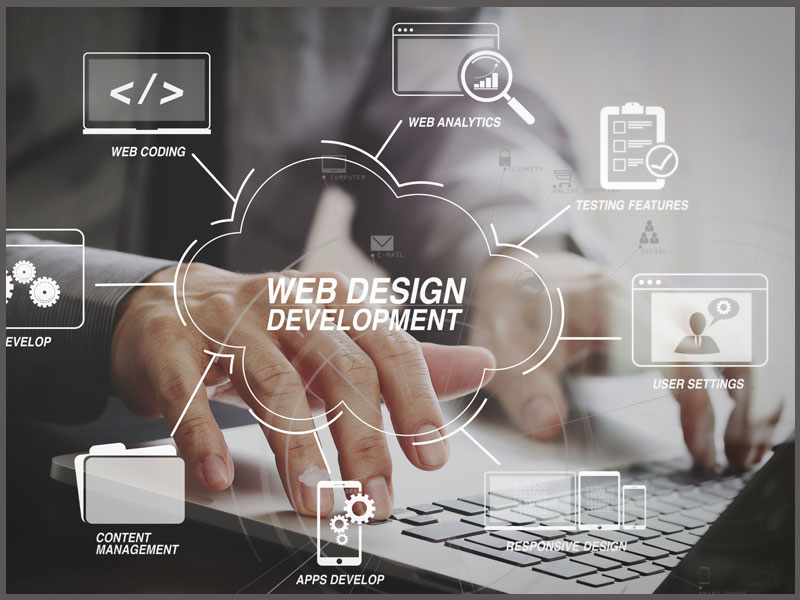Aligned Position Web Design: Transform Your Online Presence with Expert Web Design Services
Aligned Position Web Design: Transform Your Online Presence with Expert Web Design Services
Blog Article
The Very Best Kinds Of Website Design to Improve Individual Experience and Engagement
In the ever-evolving landscape of electronic communication, the effectiveness of Web layout considerably influences individual experience and interaction. Various design techniques, such as minimalist, responsive, and interactive layouts, each deal one-of-a-kind benefits that can accommodate varied individual demands. Comprehending which types of Web style finest serve these goals can be essential for organizations aiming to enhance client satisfaction and retention. The inquiry stays: which style components absolutely reverberate with customers and foster purposeful interaction? The expedition of these concepts exposes vital understandings that may redefine your technique to Web layout.
Minimalist Website Design
As electronic landscapes end up being significantly cluttered, minimalist website design has actually emerged as a powerful strategy to improving user experience. This layout philosophy prioritizes simplicity, concentrating on crucial elements while removing unneeded diversions. By using sufficient white room, uncomplicated navigation, and a minimal color palette, minimalist layout cultivates quality and directs user interest to key material.
The core principle of minimalist website design is to develop a seamless interaction for users. By minimizing cognitive load, users can promptly realize info without really feeling bewildered. This straight method not only boosts functionality however also encourages engagement, as visitors are most likely to discover a site that is visually appealing and simple to navigate.
Additionally, minimalist style often emphasizes typography and imagery, using these elements tactically to convey messages properly. In essence, minimalist Web style is not just a trend; it is a thoughtful method that recognizes the importance of user-centered design.
Receptive Website Design
In today's varied digital environment, receptive website design has become necessary for producing a seamless user experience across a wide range of gadgets. As customers access sites on mobile phones, tablets, desktops, and laptop computers, the ability of a website to adapt its format and material to different screen dimensions and resolutions is critical.
Receptive Web design employs flexible grids, pictures, and CSS media queries to make certain that Web content exists optimally, despite the tool utilized. This strategy not just boosts the aesthetic appeal of a web site but also dramatically enhances usability. Users are more probable to involve with a website that provides a constant experience, as it gets rid of the irritation of needing to zoom in or scroll exceedingly.
By embracing receptive style, services can enhance their presence and get to a wider target market. In recap, receptive Web style is an essential technique that boosts customer experience, engagement, and overall fulfillment.
Interactive Web Layout
Responsive Web style prepares for boosting customer experience, however interactive website design takes this an action better by involving customers in a more dynamic means - Aligned Position Web Design. By integrating components such as computer animations, clickable models, and real-time responses, interactive Web design astounds customers, drawing them right into a richer browsing experience
This approach not only promotes interaction yet likewise encourages individuals to discover material actively instead than passively consuming it. Methods such as gamification, where users gain benefits for finishing jobs, can significantly improve the moment spent on a website and improve total contentment. Furthermore, interactive features can streamline intricate info, making it extra enjoyable and absorbable.

Integrating interactive style elements can likewise cause higher conversion rates, as individuals are extra most likely to involve with a website that actively involves them. Aligned Position Web Design. Eventually, interactive website design transforms user experiences into unforgettable trips, making certain that site visitors return time after time
Flat Layout
Characterized by its minimalistic strategy, flat layout emphasizes simpleness and functionality, stripping away unnecessary components and concentrating on crucial attributes. This design viewpoint prioritizes functionality, making sure that customers can browse user Check Out Your URL interfaces with convenience and performance. By employing a clean visual, flat design gets rid of the clutter typically located in more elaborate styles, therefore improving their website user concentrate on web content and functionality.
The characteristic of flat design depends on its use of vibrant shades, straightforward typography, and geometric forms. These components contribute to a visually attractive interface that is both modern-day and approachable. Furthermore, flat design cultivates a feeling of clearness, permitting customers to determine vital actions and details without disturbance.
In addition, flat design is specifically reliable in responsive Web design, as its simplicity converts well throughout various gadgets and display sizes. The lack of complex textures and gradients lessens filling times, which is crucial for maintaining individual involvement. As electronic landscapes proceed to evolve, flat design continues to be an appropriate selection for producing straightforward sites that improve total experience. By concentrating on vital features, level design not just meets customer demands but likewise motivates smooth communication, making it a crucial part of reliable website design strategies.
Adaptive Website Design
Flexible website design tailors the customer experience by developing numerous repaired layouts tailored to various display dimensions and gadgets. Unlike receptive layout, which fluidly adjusts a solitary design, adaptive design uses unique formats for certain breakpoints, making sure ideal discussion on various systems. This method permits designers to focus on the special qualities of each device, boosting functionality by providing specifically what users need based upon their context.
Among the key advantages of adaptive website design is its capability to enhance tons times and performance. By offering tailored content and images that fit the user's device, websites can minimize data use and enhance loading rates. This is particularly advantageous for users with slower links or minimal data strategies.

In addition, adaptive layout helps with a much more regulated and consistent branding experience. Because developers create multiple formats, they can make certain that the visual elements straighten with the brand's identity across various systems - Aligned Position Web Design. This leads to a natural Website individual experience, boosting engagement and advertising individual retention
Final Thought
To conclude, the integration of minimalist, receptive, and interactive Web layout principles dramatically improves customer experience and engagement. Minimal layout fosters quality and focus, while receptive layout guarantees versatility throughout different devices, promoting accessibility. Interactive design astounds users through vibrant elements, motivating expedition and personalization. Collectively, these style approaches add to the production of user-friendly atmospheres that not only boost complete satisfaction but additionally drive higher conversion prices, highlighting their crucial relevance in modern Web layout methods.

Minimal layout fosters clearness and emphasis, while receptive design makes certain flexibility throughout various tools, promoting availability. Jointly, these design comes close to add to the development of easy to use settings that not just boost satisfaction but likewise drive higher conversion rates, emphasizing their vital value in modern Web style methods.
Report this page